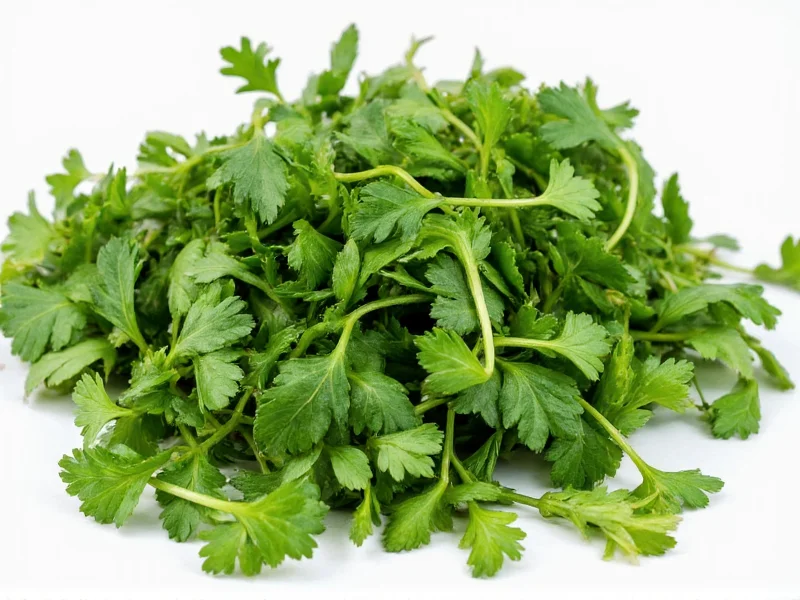The best substitutes for coriander (cilantro) are flat-leaf parsley for texture similarity, culantro for stronger flavor replication, and a combination of basil and lemon zest for dishes requiring coriander's citrus notes. For immediate use in recipes, parsley works well in most savory dishes, while culantro serves as the closest flavor match despite its tougher leaves. Cilantro stems also provide concentrated flavor when fresh leaves aren't available.
When you're mid-recipe and realize you've run out of coriander, knowing reliable substitutes can save your dish. Coriander's distinctive citrusy, slightly peppery flavor plays a crucial role in many global cuisines, from Mexican salsas to Indian chutneys and Southeast Asian curries. Understanding what makes coriander unique helps identify the most appropriate alternatives for your specific culinary needs.
Understanding Coriander's Flavor Profile
Coriander (known as cilantro in the United States when referring to the fresh herb) offers a complex flavor profile that combines citrus notes with earthy, peppery elements. This unique combination makes it challenging to replace perfectly, as most substitutes only capture one aspect of its flavor. The herb's volatile oils, particularly linalool, create that signature fresh, bright taste that dissipates quickly when cooked. This explains why coriander is typically added at the end of cooking or used raw in dishes like guacamole and fresh salsas.
Top Coriander Substitutes Explained
Flat-Leaf Parsley
Flat-leaf (Italian) parsley provides the closest visual and textural match to coriander. While milder in flavor, it offers a similar fresh, green quality that works well in dishes where coriander serves primarily as a garnish. Use a 1:1 substitution ratio, though you may want to add a squeeze of lemon juice to approximate coriander's citrus notes. This substitute works particularly well in tabbouleh, chimichurri, and as a garnish for soups and stews.
Culantro
Often confused with coriander, culantro (Eryngium foetidum) has longer,锯齿状 leaves and a more intense, durable flavor. Native to tropical regions, it withstands cooking better than coriander, making it ideal for soups, stews, and braises. Use approximately half the amount of culantro compared to coriander, as its flavor is significantly stronger. This substitute shines in Caribbean, Latin American, and Southeast Asian cuisines where coriander traditionally appears.
Basil Varieties
Depending on your dish, different basil varieties can effectively replace coriander. Thai basil works particularly well in Southeast Asian recipes, offering a similar anise-like quality with less citrus. For Mexican dishes, regular sweet basil combined with a small amount of lemon zest can mimic coriander's profile. Use a 3:4 ratio (three parts basil for every four parts coriander called for) to prevent overwhelming your dish with basil's distinctive flavor.
Dill
Dill serves as an excellent coriander substitute in fish dishes and yogurt-based sauces where coriander's citrus notes complement seafood. Its feathery texture resembles coriander's delicate leaves, though the flavor profile differs significantly. Use dill in a 1:1 ratio for seafood applications, but avoid it in dishes where coriander's earthiness is essential, such as many Indian or Mexican recipes.
Coriander Substitute Comparison
| Substitute | Best For | Substitution Ratio | Flavor Match | Texture Match |
|---|---|---|---|---|
| Flat-leaf parsley | Garnishes, tabbouleh, chimichurri | 1:1 | ★★☆☆☆ | ★★★★☆ |
| Culantro | Cooked dishes, Caribbean/Latin recipes | 1:2 (use half) | ★★★★☆ | ★★★☆☆ |
| Thai basil | Asian curries, stir-fries | 3:4 | ★★★☆☆ | ★★★☆☆ |
| Dill | Fish dishes, tzatziki | 1:1 | ★★☆☆☆ | ★★★☆☆ |
| Cilantro stems | All applications (finely chopped) | 1:1 | ★★★★★ | ★★☆☆☆ |
Regional Substitutes for Coriander
Depending on your location, certain substitutes may be more readily available than others. In Mediterranean regions, combinations of mint and parsley often replace coriander in dishes. Asian markets frequently carry Vietnamese coriander (rau răm), which has a more robust flavor that withstands cooking better than regular coriander. For those seeking coriander alternatives for people who hate cilantro (due to the genetic trait that makes it taste like soap), celery leaves provide a milder, more neutral option that works well in salads and dressings.
When Substitutes Won't Work
Some dishes rely so heavily on coriander's unique flavor that substitutes significantly alter the final product. Traditional Indian chutneys, authentic Mexican pico de gallo, and certain Thai curry pastes fall into this category. In these cases, consider making a smaller batch of the recipe or adjusting other flavors to compensate. For example, when making guacamole without coriander, increase the lime juice slightly and add a pinch of cumin to approximate the missing herb's complexity.
Maximizing Substitutes in Your Cooking
To get the most from coriander substitutes, consider these professional chef techniques. For dishes requiring coriander's citrus notes, add a small amount of lemon or lime zest along with your substitute herb. When using parsley as a replacement, chop it finely and add it at the very end of cooking to preserve its fresh flavor. For cooked dishes, culantro's durability makes it superior to fresh coriander, so add it earlier in the cooking process. Understanding these nuances helps create successful coriander alternatives for any recipe.











 浙公网安备
33010002000092号
浙公网安备
33010002000092号 浙B2-20120091-4
浙B2-20120091-4